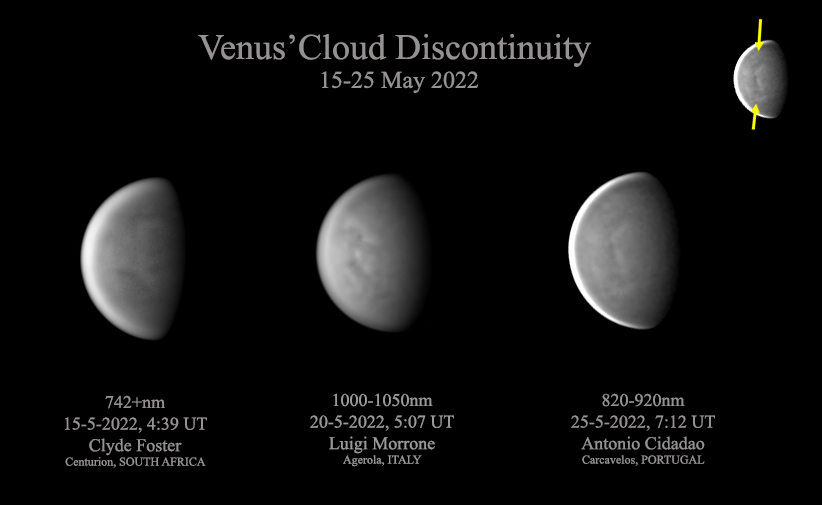Help solve mystery in atmosphere of Venus
2023 February 7
Venus has returned to our evening skies once more, and over the next few months it will be well placed for observation in the northern hemisphere. In recent years, a new mystery has been observed in the clouds of Venus – a phenomenon which we call the ‘wave discontinuity’. This feature, first recorded by the Akatsuki spacecraft in 2015 December, takes the form of a long bow-shaped wave extending some 10,000km north–south, across the planet’s equator.

The wave discontinuity is only visible in infrared (IR) images and has been recorded by a number of amateur astronomers. Richard McKim, Manos Kardasis and I provided an analysis of such amateur observations made between 2015 and 2020 and this was published in the Journal.1 The phenomenon seemed to be absent until 2022, when it was once again observed by amateurs during the 2022 western elongation of Venus. The paper in this Journal by McKim and myself is an analysis of those observations (see p.23).
Whatever is causing the phenomenon (and I must confess I suspect volcanism is the answer) appears intermittently, and so I would ask all observers who take IR images to observe Venus over the coming months, as often as possible. If you do suspect you have caught the cloud discontinuity in your images, please send them to me at once. Analysing and trying to understand the wave discontinuity is now an important part of the Mercury & Venus Section observing programme.
Paul G. Abel, Director, Mercury & Venus Section
1 McKim R. J., Abel P. G. & Kardasis E. I., ‘Remarkable waves observed in the atmosphere of Venus, 2015–2020’, J. Br. Astron. Assoc, 130(4) (2020)
| The British Astronomical Association supports amateur astronomers around the UK and the rest of the world. Find out more about the BAA or join us. |
